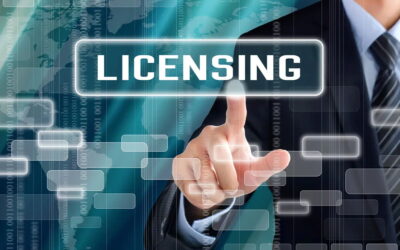We recently spoke about the difference between modernizing and digitally transforming. Put simply: Modernizing is upgrading the systems you have in place or purchasing a standalone system to digitize a specific function; digital transformation is a mindset, an ongoing process of innovation, evolution, and growth. A company can be both modernizing and transforming at the same time, but most businesses are typically only modernizing and solving pain points without developing an underlying vision and roadmap for transformation.
In a recent survey, most firms said they are relying either partly or entirely on old applications, many using a mix of different modern and legacy one-offs. And only 11% of the respondents said they were using a single integrated platform of modern, best-in-class applications.
So how do you know which your business is doing? And, if you’re among the many who are still modernizing, how should you frame these “upgrades” within the context of a larger transformation strategy?
Self-Audit: Are You Modernizing or Transforming?
Do you see IT as an overhead expense?
Most companies do – and that affects the way they invest in technology. Businesses committed to digital transformation see it as a game changer – an opportunity to step change their industry position.
Are you prepared to make the journey?
If your company is like most, it has invested a lot in legacy systems. Those who routinely modernize pour money into upgrading their individual systems believing these systems are good at what they do and the most practical option for keeping abreast. But they’re not for the long term. It’s important to start now on a transformation because it’s tough to get there. If you’re sitting on the sideline waiting to see what your competitors do, it will be too late to catch up.
Are you assessing your challenges and results cross-functionally?
Leaders who aim to improve organizational performance through digital technologies often have a specific tool in mind; Our organization needs an AI strategy. But digital transformation should be guided by the broader business strategy.
What Does a Digital Transformation Seek to Do or Improve?
Promote a mindset of continuous development
A digital transformation is not all about technology. It is a cultural shift. Think long term and continuous. It’s not a ‘set it and forget it’ undertaking. Modernization is short term (think 1-2 years). Leaders are aware that a step change is needed and are willing to take more impactful measures knowing the outcome will be significant and worthwhile.
Your company’s value proposition
The customer rarely buys what the business thinks it sells them. Let me explain. Most companies know what they do, and they define it as their differentiated value proposition or unique selling point (i.e. the best gadget or service). But few know or truly understand the “why.” Why goes beyond profit. I agree with Simon Sinek when he states in his Ted Talk that “people don’t buy what you do; people buy why you do it.”
A digital transformation serves to support the “why.” A mindset of continuous growth and evolution is clear on what you really provide to your customers – for instance, trust, dependability, and comfort or being good stewards of the environment – and employs a technology strategy that will support that proposition.
Operating as an ecosystem – not an organization with many partners
Similarly, there are certain ‘intangibles’ that your partner network will also value from your business. A sense of security, consistency, and precision are benefits ecosystems strive to create – and which will inevitably serve to enhance the value proposition. Digital transformations are not consumed with refining minor processes but with reducing the friction in a supply chain. This begins with having one source of the truth and process across partners or what many understand as end-to-end visibility across supply chains.
Daniel Stanton, author of Supply Chain Management for Dummies, claims while visibility is important, transparency is sharing information that is useful for your supply chain partners. The irony is everybody wants visibility; nobody wants transparency, which requires trust. A digital transformation is about more than acquiring the necessary technology. It’s about understanding the centrality of trust and using it to position your business as essential: By sharing information, making it ubiquitous to your ecosystem, and then using it to better coordinate, collaborate, and streamline outcomes end-to-end.
Simplified user experience and process efficiency
The same way you want to create a seamless ecosystem, a main objective of digital transformation is to also create a seamless, frictionless user experience. Think of a singular and fluid work environment in which it doesn’t feel like users are jumping between multiple log-ins. Whether supply chain stakeholders are managing orders, inventory, logistics, or transport – whether inbound, outbound, or reverse flows – the software they use should feel like a single-view, unified platform.
Adaptable & Future-proof
Agility and resiliency are priorities for most organizations – but they are also overused buzzwords. Modernizing a standalone system or process will make that standalone system or process more agile and resilient. This means very little to a complex supply chain. Digital transformation seeks to drive agility and resiliency across the end-to-end supply chain, where, for instance, decisions made about order fulfillment will also make the best use of inventory and available carriers and capacities. Technology that supports digital transformation will help teams see how all areas affect one another, from fluctuations in supply and demand to decisions around carrier selection and order consolidation. And, since the world is ever-evolving, it would enable easy adoption and integration with new and emerging technologies and partners.
What are the key action items to set in motion for a transformation?
Establish ownership
Transformation does not have a single owner, like a company’s IT chief or CFO – it is driven by the collective of a cross-functional team, mostly composed of hands-on middle management. Rely on ambitious insiders who have intimate knowledge about what works and what doesn’t in daily operations. Cross-functional teams will also allow your organization to be future-focused in its technology strategy by not focusing only on pain points, but understanding how different processes affect one another.
A working change management system and collaboration
Organizations typically don’t respond well to change unless it’s choreographed properly. We’re talking a disruption from the accepted norm, often a cultural shift. This requires transparency, (internally and externally) – another overused term these days. First, recognize employees’ fear of being replaced by technology. Just like assembly line workers initial reaction to robotics, most will wonder “What does this mean to me?” Emphasize the digital transformation process is an opportunity for them to upgrade their skills to better prepare them and make them more valuable for the future. The goal is to not only collaborate across functions and silos, but more importantly external partners, which standalone systems can’t do. This requires selling it and getting buy-in.
Assess your current systems landscape
Look into what systems might be outdated and due for an upgrade. Consider whether upgrading that system would align with your digital transformation goals or whether there is an opportunity to switch to a platform that breaks down silos and facilitates multi-tier visibility and coordination, collaboration, and optimization across systems, people, and processes.






